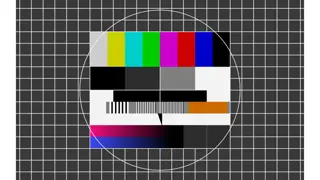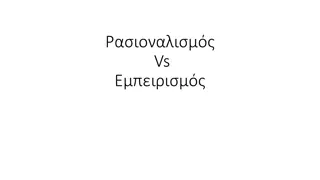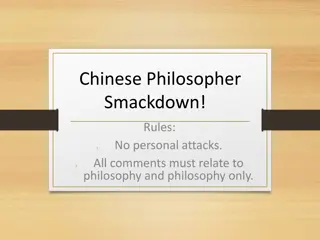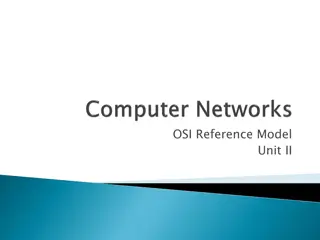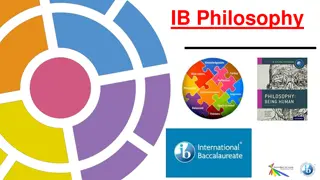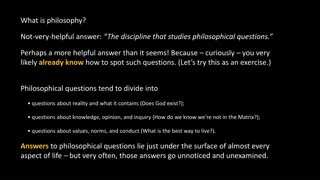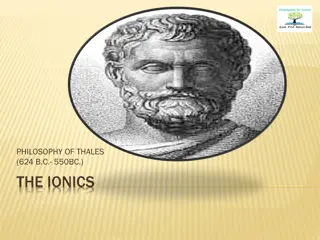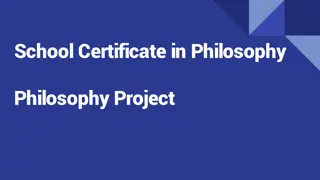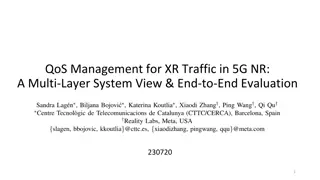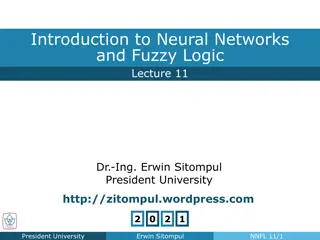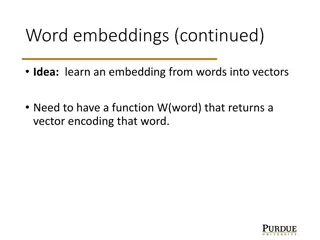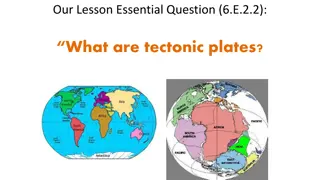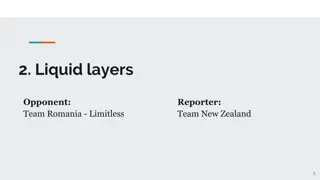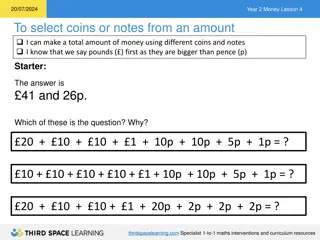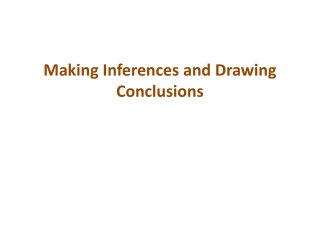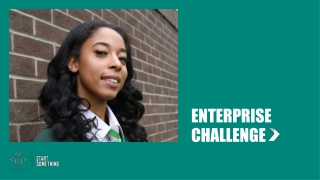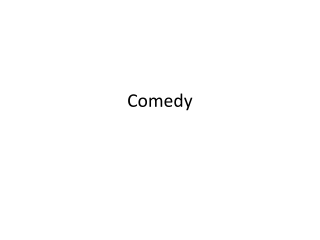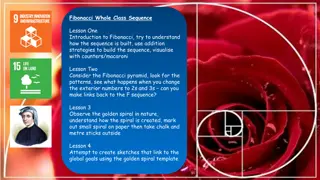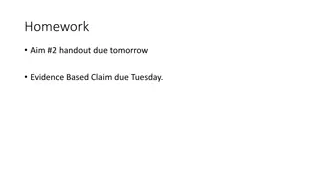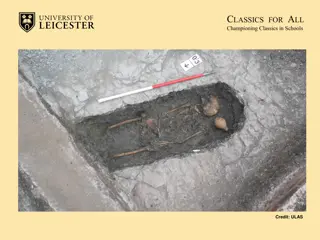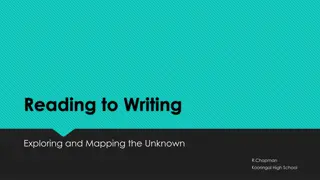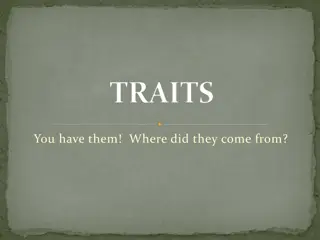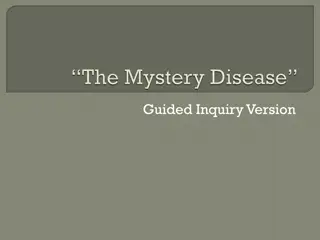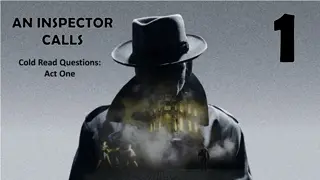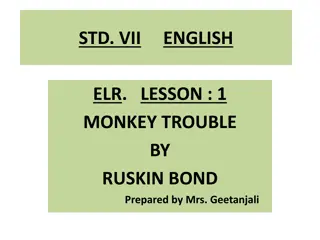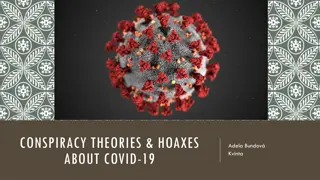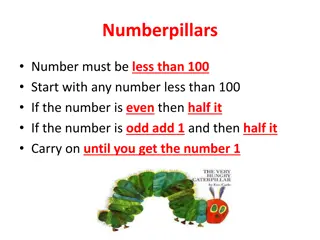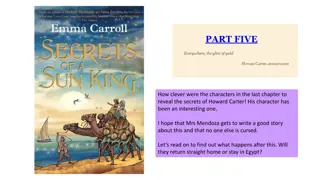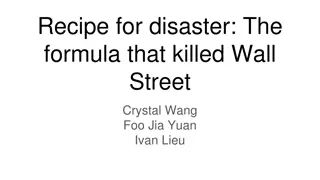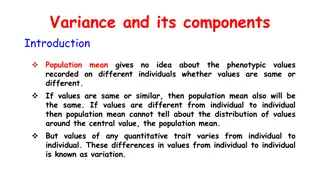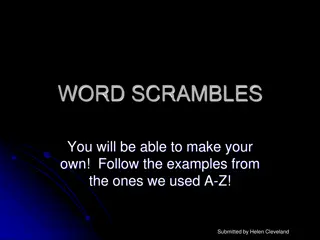Unraveling the Philosophical Layers of Run Lola Run
Dive into the intricate visual metaphor of life as a game in the film Run Lola Run, exploring themes of choice, self-determination, chance, and action-consequence. See how Tykwer blurs the lines between reality and fantasy while challenging traditional notions of control and fate. Discover the parallels between life, soccer/football, and video games in this thought-provoking analysis.
Download Presentation

Please find below an Image/Link to download the presentation.
The content on the website is provided AS IS for your information and personal use only. It may not be sold, licensed, or shared on other websites without obtaining consent from the author. Download presentation by click this link. If you encounter any issues during the download, it is possible that the publisher has removed the file from their server.
E N D
Presentation Transcript
Run Lola Run
Key Ideas in Run Lola Run Life is a Game Life is random, chaotic, erratic and no matter how hard we try to control it, we are ultimately at the mercy of the universal certainties (or rules of life) time, death, causality and chance. Run Lola Run uses an array of visual elements to create a distinctive and intricate visual metaphor which hyperbolises this philosophical understanding of life. Tykwer brings this abstract concept into the real world as his consistent use of various game motifs and symbols blurs the lines between realism and fantasy. However, Tykwer, the film and Lola herself break the rules of this game constantly revealing the importance of choice and self- determination.
Soccer/Football A team sport, The World Game , well known, loved, controlled by time, win/lose/draw, based on actions and consequences. After the game is before the game. Herberger Highlights the cyclical and repetitive nature of life. The game of life keeps playing, as one game (life) ends, another begins.
Soccer/Football Rules of Football 90 minutes 105x68 metre area 11 players, two teams 2 goals on either side 1 ball THREE POSSIBLE RESULTS: A win, a draw, a loss. Everything else is pure theory" is a part of the quote that reinforces that football (and the film) are games, and they have a beginning and end, but in between those 90 minutes, ANYTHING can happen. The ball is round. The game lasts 90 minutes. That s a fact. Everything else is pure theory. Here we go. Tykwer uses this quote to highlight the difference between a fact/rule and a theory. Here, he is perhaps alluding to the theories we devise to give meaning to life. This quote foreshadows the action of the film as Lola breaks the rules throughout and the film only lasts 76 minutes. The ball is round in football slang means that anyone can win the game highlighting concepts of chance and action/consequence.
Video Games Interactivity and hyper-reality in the video game experience are infused in Run Lola Run. The caricatured characters have out-of-this-world options to gain self-advantage and cheat death. Most video games are aimed at protection against death; characters also have 3 'lives just like Lola. The opening sequence highlights the video game aesthetic through the use of animation and a character selection menu as the opening titles. These distinct visual features combine to engage audiences in the narrative as the familiar visuals. Is Lola the controlled player, going through the motions of the game? Or is Lola the controller, able to take her future into her own hands? Or is she both controlled and controller?
Life: A Game of Chance? Lola plays a simple game for which the rules are straightforward. o Lola needs to obtain an object (one hundred thousand marks) by a certain time period (12:00) to win. o If Lola loses the game, Manny s Death will be the outcome. o Time is her most significant challenge- 20 minutes o The tripartite narrative highlights the impact of Chance and Choice on her outcome. In playing this game, Lola breaks nearly every rule the audience thought was in play such as death and time. o In the film, death and time are not a rules, they are only theories.
Roulette: A Game of Chance The game of roulette is a significant motif in the film as indicated by the cartoon image of the roulette dealer before Lola even begins her first run. "Rien ne va plus" ("No more bets") Who is Lola betting on?
Roulette: A Game of Chance The camera rapidly tracks around Lola, mirroring and emulating the movement of the Roulette wheel. The fast moving camera highlights Lola s frantic emotional state and the importance of this game to her and Manny s lives. Lola stands in the middle of the screen, is Lola the centre of the roulette wheel? Or is she the ball? Rapid cuts between close ups of Lola and Close Ups of several different people who could help her, fill the screen. Papa is repeated several times and then chosen. Lola bets on her father to help her win the game. However, Papa turns and shakes his head, indicating Lola s fate and foreshadowing the outcome of this bet.
Roulette- Breaking the Rules Lola breaks three rules in the casino scene: One hundred marks can be exchanged for a one hundred mark chip. Lola tries to do this but is short on money. She can only plead. The teller sympathizes with her and gives her a break. The next rule that is broken is the dress code. The casino is a black tie affair. Lola is dressed in a tank top and casual pants. She is still let into the casino and allowed to bet. The final and most thematically important rule is broken while Lola plays roulette. o Lola ignores the rule of chance and imposes her own will onto the game. o She screams at the top of her lungs. This scream is an aural representation of her will power dominating the rules of her world. She screams and the ball goes where she wants. She wins the game. o Life in Run Lola Run implies that it is like a game of roulette where the player is not the spinner but in this case the player can affect the outcome. Tykwer's aim is to make evident to the audience that he is exploring the interplay of choice verses chance in life. Consider how the spinning roulette wheel and other spinning images act as an extended metaphor for the whole film. What does it say about life?
Fairy Tale Though not strictly related to gaming, the Fairy tale allusions highlight the hyper-realism of the film. Fairy tale conventions are also used to highlight the film s subversion and manipulation of such conventions, further highlighting the breaking of rules motif that permeates the film. The film itself is clearly aware of its fairy tale status. Its tripartite structure mirrors the structure of many traditional fairy tales. I wish I were a princess with armies at her hand, I wish I were a ruler who d make them understand However, through these lyrics, and the modern mise-en-scene the audience is made to understand that this is not a traditional fairy tale. The princess is not the Damsel in distress and must now save the prince.
Fairy Tale Special Powers- Lola possesses, the power to affect the characters in her game. In the final round she no longer has to ask the old woman for the time instead she enters the casino and twice wills the ball to land on 20. When Schuster is having a heart attack his heart is massaged but to no effect. As in fairy tales the princess Lola possesses healing powers and from this moment on, the audience is headed for a fairy tale happy ending. It is made evident to the audience that Lola, as a mature adult has gained in wisdom and knowledge- linking to the bildungsroman. Fairy Tale Ending- Manni has now assumed the prince role by saving the day. The game has been won, and like in a fairy tale the prince has rescued his princess, by repaying his debt. The fairy tale has been brought to a happy ending, and this has left the audience satisfied. The fast techno beat, matching the pace of the game has now ceased, instead the audience are presented with a traditional fairy-tale ending with the two protagonists walking into the distance.
Fairy Tale- The Blind Seer- The Blind Sage The Blind Seer/Sage is an old archetype and stock character of fairy tales and mythology. They are blind yet they can see more than we can. The sacrifice of sight is shown to result in greater cosmic knowledge. Run 2: The blind woman is in the middle of the nun group that Lola runs through. She moves to let her pass. Run 3: Manni exits the phone booth. The blind woman tells him to wait while holding his arm allowing Manni to spot Norbert on his bike. Run 1: Manni gives back the phone card the blind woman loaned him and she holds his arm and gives it back.



